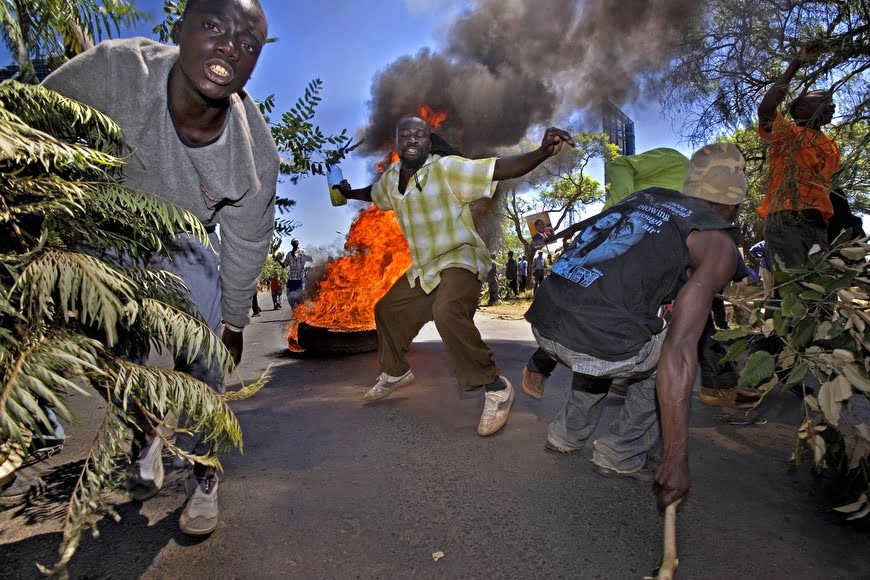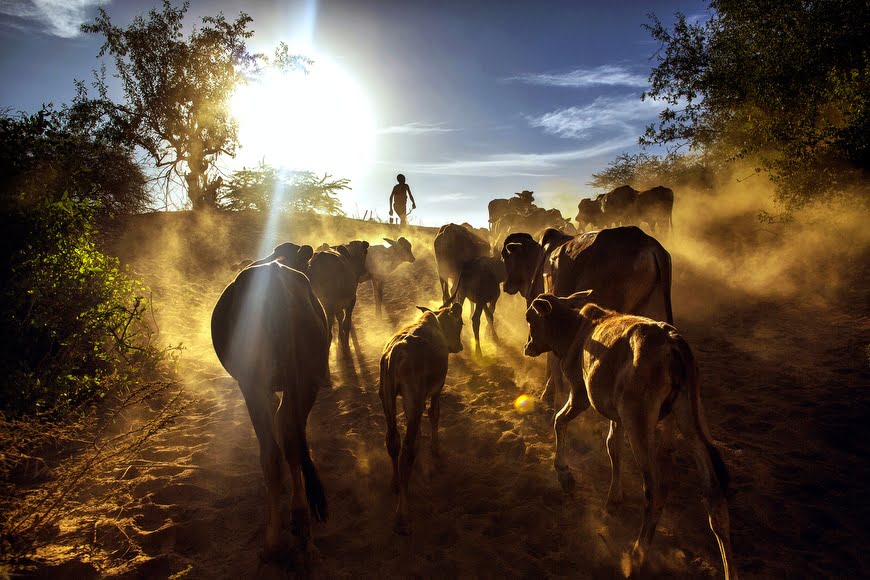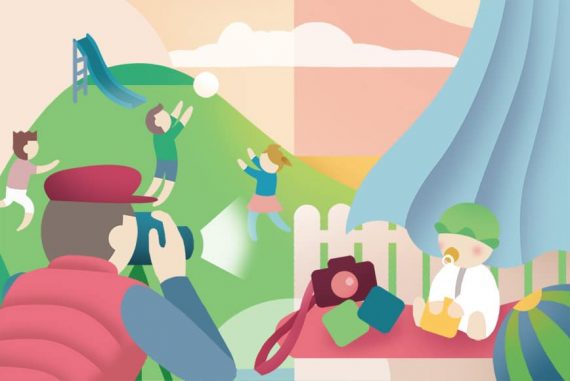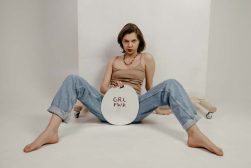










Georgina Goodwin
Photojournalism | Last Updated: February 5, 2021
Hi! I’m Georgina Goodwin, a documentary photographer and Canon Ambassador born and based in Kenya.
For 12 years I have focused on issues relating to women, refugees, society and the environment.
I am best known for my work documenting refugees in Africa’s Great Lakes and Horn regions, cancer in Kenya over the last 5 years, my coverage of the September 2013 Westgate terror attack in Nairobi, and my images of Kenya’s post-election violence in 2008.
I am a contributor to Getty Images, Everyday Climate Change and Everyday Extinction, and a member of Women Photograph and African Photojournalism Database, a collaboration of World Press Photo and Everyday Africa.
My work has been published by NY Times, Elle, Vogue, AFP and many others, and has been exhibited in Times Square NYC, Tokyo Japan and The Louvre Paris amongst others. I was a speaker at TEDx Kakuma Camp, the first TED talks to be held at a refugee camp, and one of 19 finalist speakers at TEDx Nairobi 2017.
I prefer to work with little equipment, as light as possible. I have 2 camera bodies – Canon 5D Mark III and Canon 5DS
. The 5DS
gives me 50mb files, great for quality.
My ‘workhorse’ lens is the Canon 24-105mm f/3.5-5.6. It allows me to shoot quickly from one moment to the next covering the wide, medium and close-up as it’s happening. It is not so great in low light so I usually use that on the Canon 5Ds
.
On the Canon Mark III I usually have my other (favorite) lens, the Canon 24mm f/2.8
fixed, which is super sharp and very good in low light, as well as for getting in up-close and personal with all the people I photograph.
When I want more compression shots and when I need to get in close from afar at events and for wildlife I use my Canon 70-200mm f/2.8 lens. To get that much closer I sometimes use my Canon 1.4 Extender
(teleconverter), especially with wildlife.
I also have Canon 24mm f/2.8 which I use when I want a constant style in my personal work and don’t need to be changing angles and moments quickly, and Canon 50mm f/1.4
fixed lenses for those very shallow depths of field portraits (being careful to keep both the eyes in focus).
As a Canon Ambassador, I also get to use the new Canon EOS R mirrorless camera, Canon’s mirrorless camera which has incredible low light capabilities, and its pioneering RF lenses.
Related: Canon EOS R Review here
I pull out my Canon Speedlight 580EX for low light at weddings and events/conferences, as the light must look natural and compliment the ambient light. I use Sandisk Compact Flash
and SD cards
– most are 32GB and 64GB. All my memory cards are in shockproof plastic protective cases, which I’ve had for all 12 of my years working in tough locations and these have been invaluable!
Here is some background info on what’s happening in each of the photos above:
1. Breast cancer survivor Margaret Ngendo, Kiambu, Kenya, July 2014.
Margaret Ngendo has lived without her right breast for 32 years.
In 1983 there were no options in Kenya for cancer treatments. Financially and because she lives in rural central Kenya, Margaret had no option but to have her breast and the cancer removed. It’s been so long now that Margaret sometimes forgets she was once sick.
At 85 years old she has 8 grandchildren and is happy she is around to see them grow.
Lack of awareness, inadequate diagnostic facilities, lack of treatment facilities and the high cost of treatment leads to 70-80% of cancer cases in Kenya being only diagnosed in the very late stages. It has become the third-highest cause of death in Kenya with around 39,000 new cases occurring each year.
2. Kenyan 2007 Presidential Election Protests, January 3, 2008.
Supporters of the opposition party of Raila Odinga block Ngong Road – one of the major artery roads into the Nairobi city centre – burning tires and carrying branches as symbols of peace. They are protesting against the alleged electoral manipulation of Kenya’s December 2007 Presidential Elections.
The 2007–08 Kenyan crisis was a political, economic, and humanitarian crisis that caused Kenya to erupt after incumbent President Mwai Kibaki was declared the winner of the presidential election held on December 27, 2007.
The accusations of fraud were widely confirmed by international observers, perpetrated by both parties in the election.
3. Children play in a dam in Collum Coal Mine in Zambia’s Southern Province, May 3, 2018.
These communities are in many cases ignored, and their environment is threatened, such as pollution of water sources like this one. Underground blasting in the mines has caused the water table to drop which means there is no clean water in the shallow wells.
This particular community use this dam for clothes, babies’ nappies, bathing, cooking and cleaning. The water has a high coal content which causes them to suffer skin ailments.
Oxfam has been working in extractives in southern Zambia for 12 months advocating for local communities to not only be able to earn income by surface mining the coal like they used to before the Chinese stopped them but for the mine company to employ at least one family member at 600-800 a month.
To restore the communities’ rights to benefit from the natural resources Oxfam is working to get at least 10% of the profits given back to the community for essential services like clinics, schools, roads, water and sanitation.
4. An Ahmara woman smells a scented rose as she walks to collect water in an area called Gefet, in Wollo, north Ethiopia, July 2008.
This region suffered from severe drought in 2008 with 400 people and 24,000 livestock dying. But the Ahmara farmers in Gefet managed day by day to get through with minimal loss, mainly due to the fact that they have less farming and grazing space available and as a result had less livestock to lose.
5. 30-second old baby Marian born to Congolese refugee Tosha Sangan at Nyarugusu Refugee Camp Main Clinic in western Tanzania, October 2017.
This is Tosha’s 5th child after coming to the camp fleeing violence and insecurity in Democratic Republic of Congo in 1989. There are around 10 newborns a day here in the maternity wards of Nyarugusu refugee camp’s main hospital – the hospital is a lifeline for hundreds of thousands of refugees like Tosha, and Tanzanians who live nearby.
Nyarugusu’s schools and clinic are underfunded and understaffed, and the clinic is struggling to meet demands. Every bed is occupied, sometimes by two patients, and there is a serious shortage of medicine because of importation difficulties.
With the camp’s population at 150,000, 80% of which are women and children, every day is a struggle to save lives. This photo was taken working with the UN Refugee Agency to document the funding and refugee crisis in Tanzania’s refugee camps with the aim of bringing much-needed awareness and hope of increased funds to the situation.
6. Fardouse Ibrahim Aden, 22, has a gentle moment with her youngest child Ahmed, 1, at the CARE clinic in Armale, east Somaliland, September 2018.
Here she can get nutrition supplements for her children who are both suffering from malnutrition as a result of the region’s 2-year drought.
Ahmed’s health has increased over the past month, but he is still in need of food supplements. This image was taken working with CARE International documenting nutrition and long-term effects of drought in Somalia’s autonomous region of Somaliland. There, thousands of children under the age of five are malnourished after the Horn of Africa experienced increasingly extreme weather, from a prolonged severe drought to severe flooding.
Armale is a small village in the middle of the desert, two hour’s drive from the nearest city of Erigravo. The 1,300 inhabitants have one health centre which is run by CARE.
CARE are supporting children and their mothers with food supplements and the distribution of hygiene kits to more than 40 women who regularly participate in hygiene awareness-raising sessions where they get trained by nutrition experts on how to feed their children and prevent malnutrition.
7. A young Masai herder boy walks with his calves home through the arid land of the South Rift in southern Kenya. Olkiramatian Group Ranch, South Rift, Kenya, February 2015.
The African continent has warmed about half a degree over the last century and the average annual temperature is likely to rise an average of 1.5-4°C by 2099, according to the most recent estimates from the International Panel on Climate Change (IPCC).
Masai children these days do not go to school in the dry season – they leave their homesteads with their livestock long before sunrise to water their cattle and goats and to make the greater distances to find pasture before it gets to the midday temperatures of 40°C.
Annual rains are now no longer guaranteed and rain, if it does come, is less. This together with an already arid environment, a huge increase in population and livestock numbers, and an increase in tree cutting for charcoal all exacerbate climate change issues further.
8. South Sudan refugee twins Jacob and Simon, 14, at the new arrivals centre in Kenya’s Kakuma Refugee Settlement on the Kenya-South Sudan border.
They walked with their mother Adut Akot Ker, 44, and 5 siblings for 21 days to get to Kakuma from Juba in South Sudan. They are traumatised after their father and eldest brother were shot and killed as they ran away from the fighting.
9. Amina Suleiman Gas, 45, stands amidst the carcasses of her dead animals. Somaliland.
The animals are piled for burning outside the compound where she has lived for 10 years in Barwako village 20kms into the desert from Anaibo Town, central Somaliland.
Last week she lost 18 of her animals, now she is left with 12. She sent most of her livestock west with her neighbour in November 2016 when the drought began to get worse and she fears they have not survived.
Barwako was a village of 100 families but 245 more have come in from the surrounding area because of the drought. Amina is a member of the Villlage Savings and Loans Association (VSLA) who have shared all their savings with the displaced families. Now they have nothing left. “We shared everything with them,” Amina says.
At least 6.2 million people, more than half the population, need assistance after four consecutive seasons of failed rains over three years have left the region depleted of all its resources and after experiencing a drought on a scale not seen since 1974. It is on the verge of famine.
CARE International has helped over 300,000 people since the drought situation became critical in October 2016, 200,000 of which have received water assistance.
10. The world’s last male northern white rhinoceros, Sudan, who died on March 31, 2018, from age-related complications.
Sudan died at the age of 45. He is pictured here in July 2015 with his faithful rangers John Muthgi Mugo (front), Daniel Kamau Maina (behind); and like many of Kenya’s rhinos, Sudan was guarded 24/7.
Sudan was born in Shambe Game Reserve, now southern Sudan, and exported to the Dvůr Králové Zoo in Czechia in 1975 together with five other rhinos.
In 2009 following intervention by the AfRSG it was recommended that Sudan and his group be moved to a more natural environment for breeding at the Ol Pejeta Conservancy, Kenya. Sadly, breeding has not been successful.
There are only two remaining northern white rhinos in the world — Sudan’s daughter, Najin, and grand-daughter, Fatu.
Feel free to view more work on the links below.
www.georginagoodwin.com | @ggkenya

Check out these 8 essential tools to help you succeed as a professional photographer.
Includes limited-time discounts.












